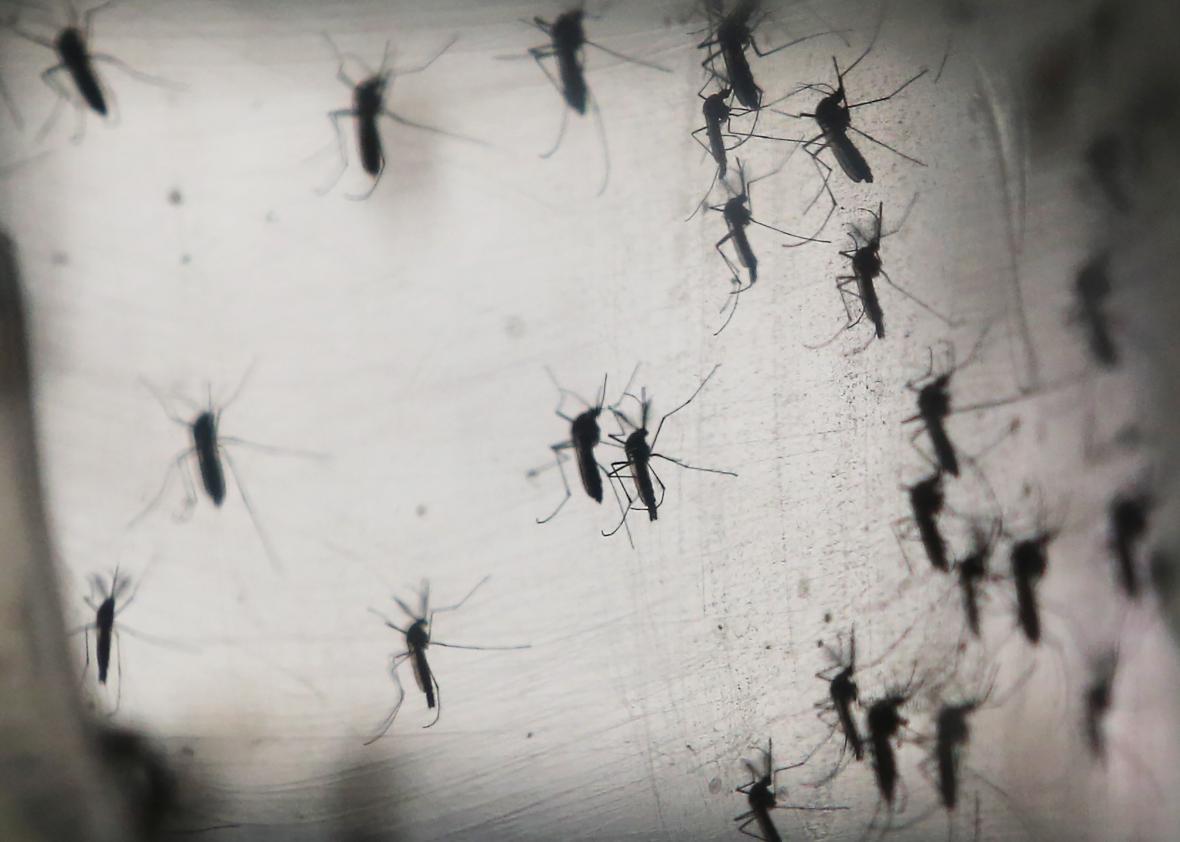The more the U.S. government learns about the Zika virus, the more risks it seems to pose, especially to pregnant women. Or, as Anne Schuchat, principal deputy director of the U.S. Centers for Disease Control and Prevention, said in a press briefing at the White House on Monday, “Everything we look at with this virus seems to be a bit scarier than we initially thought.”
That’s not what anyone wants to hear—but it also won’t come as a huge surprise to people who have been following the latest research on Zika. Schuchat’s warnings at the White House included the finding that the virus can endanger a fetus even if it’s contracted late in a pregnancy: Its effects aren’t largely confined to the first trimester, as was originally thought. Experts have had increasing reason to believe this since early March, when researchers at the University of California Los Angeles and the Oswaldo Cruz Foundation in Rio de Janeiro, Brazil, recorded birth defects—and even two fetal deaths late in pregnancy—stemming from second- and third-trimester infections.
The same study suggested that microcephaly—a severe birth defect believed to be linked to the virus, which causes babies to be born with abnormally small skulls and incomplete brain development—isn’t the only disastrous complication that Zika can cause in a pregnancy. The CDC’s Schuchat elaborated on this Monday: “We have learned that the virus is linked to a broader set of complications in pregnancy, not just microcephaly but also prematurity, eye problems, and some others conditions,” she said. The UCLA team has suggested naming this range of possible fetal eye and brain defects the “Zika virus congenital syndrome.”
Schuchat also confirmed that Zika can be transmitted sexually as well as through mosquito bites, and warned that “the mosquito vector”—the Aedes aegypti mosquito capable of carrying the virus—is present in more of the U.S. than was previously believed: The CDC has now found the insect in 30 states, whereas before, it had only counted it in 12. So far, all 346 cases of the Zika virus that the CDC has recorded within the continental United States have been associated with travel; there has yet to be a reported case of local acquisition. The situation is considerably more dire in the U.S. territory of Puerto Rico, where, Schuchat said, “the virus is spreading throughout the island.” The CDC believes there are hundreds of thousands of cases, and perhaps hundreds of affected babies.
As scientists learn more about the threat Zika poses, the administration’s requests for emergency funds become increasingly urgent. Congress has yet to approve the $1.8 billion appropriation that President Barack Obama asked for in February; for now, the White House has just under $600 million at its disposal, most of it left over from the fight against Ebola. “I don’t have what I need right now,” Anthony S. Fauci, the director of the National Institute of Allergy and Infectious Diseases, said Monday. “If we don’t get the money that the president has asked for, we’re not going to be able to take it to the point where we’ve actually accomplished what we need to do.”
Schuchat also suggested that the Zika crisis is just beginning. “CDC has been working 24-7,” she said, “to protect pregnant women, to support the state and local health departments that are that frontline of defense, to learn as much as we can about the mosquito that can spread the virus and about the virus itself—and to work with other countries to learn what we may be seeing later in the continental U.S.”
